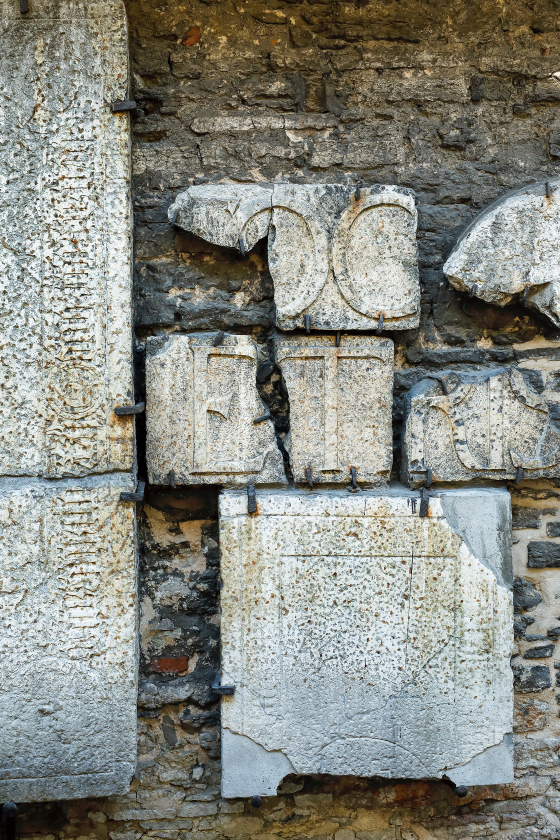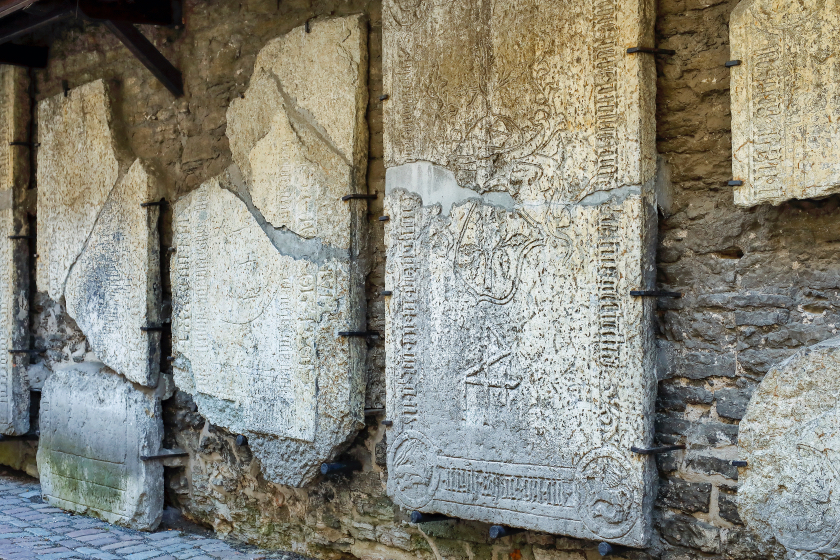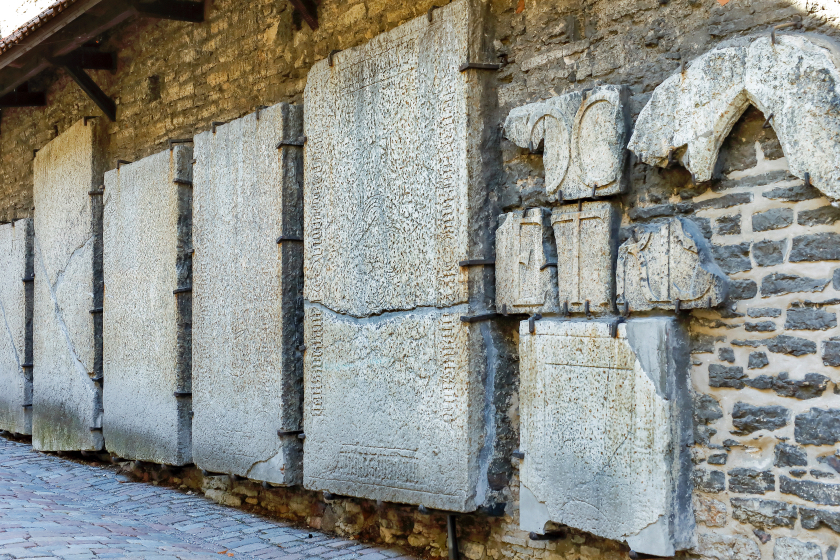Tombstones of the Dominican Monastery
14th-16th century
St Catherine’s Passage
The Dominican Monastery of Tallinn operated in 1246–1525 and during its heyday it covered very large area in the Old Town, in the region of Vene Street. Old tombstones originating from the St Catherine’s Church, which belonged into the complex, are now exposed in St Catherine’s Passage joining Vene and Müürivahe streets, which has become a favourite site for tourists due to its romantic appearance and workshops.
Limestone slabs with carved decor have covered the tombs of various important persons of the society, such as members of the town council, the Brotherhood of Blackheads and the Great Guild. In 1882, Girard de Soucanton took the slabs from the church, which was used as a storehouse at the time, to Rocca al Mare summer manor for decorating the road then called Via Appia, from where they reached the current location in 1959-1960s.
A good example is the tombstone of Kunigunde Schotelmund (died 1381), the wife of the alderman of Tallinn. It dates back to 14th century and is among the oldest preserved images of a lady in Tallinn. The praying woman has been depicted wearing a pleated robe reaching the ground and Gothic shoes with narrow toes. Two small dogs at her feet symbolise faithful marriage. Probably one of the oldest tombstones in Tallinn, which bears a coat of arms, belongs to the Bremen family. It has a bend with three keys (ca 1388, supplemented in 15th century). Another good example is the late medieval Gothic style tombstone of Diderick Bucholt (died 1501) with shield and family mark, symbols of an evangelist, and Gothic minuscule script.




